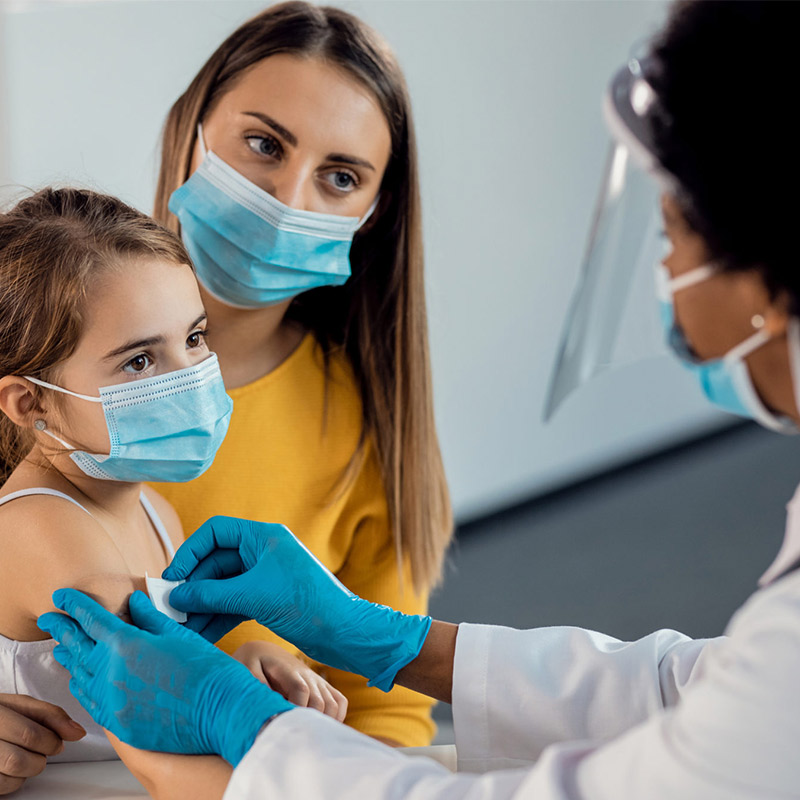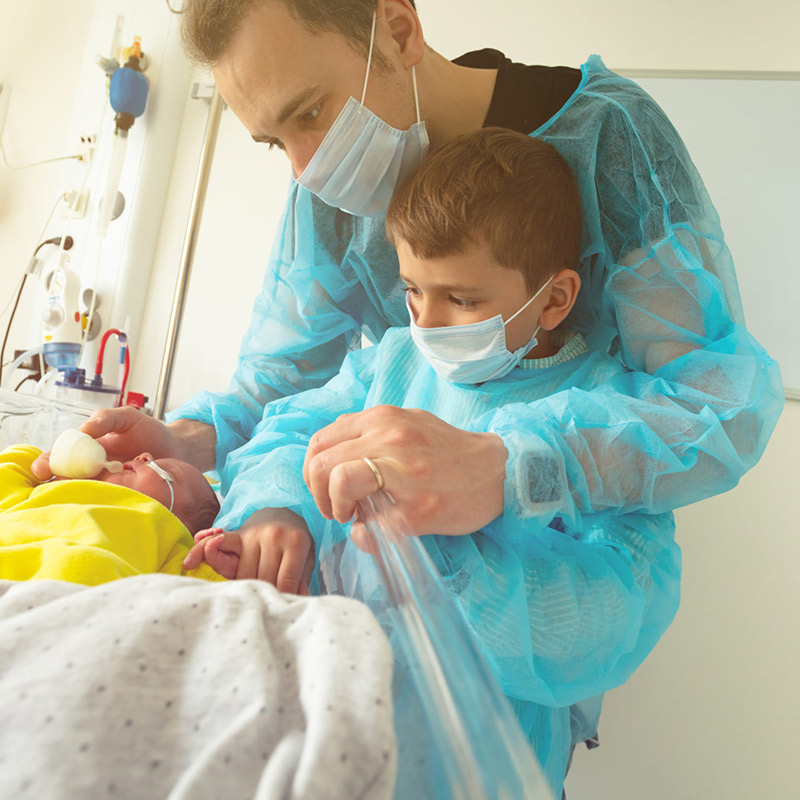Individualized Approach to Brain Injury Rehabilitation

October 02, 2020
When Kajal Patel, age 23, rides in the car with her brother and sister, she always sits in the back, her brother drives and her sister sits in the front seat. Mother’s Day 2019 was no different. The three siblings, who are triplets, loaded into their usual spots, took off from their parents’ house in New Jersey and headed toward Pittsburgh, where Kajal and her sister went to college.
“It was downpouring like crazy, and our car started to hydroplane,” Kajal says. The car flipped once, then twice, and continued to roll until a final, fifth flip. Kajal flew from the sunroof, skidding along the rain-slicked highway and came to a rest on the median.
Her brother and sister, upside down in the car, freed themselves from the wreck and feared Kajal had been crushed by the car. When they eventually found Kajal, she was barely conscious and tried talking with them until the ambulance arrived. She’d wake up days later from brain surgery after suffering an epidural hematoma, or bleeding between the brain and the skull.
An Overarching Plan
It wasn’t just brain surgery for Kajal. She had a host of other injuries: fractured left shoulder, fractured clavicle, fractured scapula, fractured cheek bone and a fractured skull. Each of those can impede a person’s ability to get back to regular life, but her traumatic brain injury was the most troubling, says Brian D. Greenwald, M.D., medical director of the Center for Brain Injuries and associate medical director of JFK Johnson Rehabilitation Institute.
“Your brain is everything that you are,” Dr. Greenwald says. “Your movements, memory, behavior, mood, vision, hearing—everything.”
The key to Kajal’s comprehensive treatment plan was the continuum of care that Hackensack Meridian Health was able to provide. Following her diagnosis and surgery, she was quickly transferred to JFK Johnson’s Brain Trauma Unit, the acute inpatient rehabilitation component of the Center for Brain Injuries. She received interdisciplinary treatment from Dr. Greenwald and his team, including nursing, physical therapy, occupational therapy, speech therapy, neuropsychology, social work and recreation therapy.
Kajal had a lot to get back to. “Not only did we want Kajal to be able to do basic tasks, but this young woman is in college and doing all the things we all hope to do in our early 20s,” Dr. Greenwald says. “She was looking forward to graduation and getting a job—until all that was put at risk by this very serious brain injury.”
To get her back to the life she knew, Dr. Greenwald and the entire care team personalized her rehabilitation. After all, someone in their 20s has different needs than someone in their 40s or someone in their 80s, Dr. Greenwald says. With Kajal’s ultimate goal of going back to college and graduating, her inpatient rehabilitation focused on quickly but safely transitioning her to outpatient therapy. In that setting, Kajal received physical therapy, occupational therapy, speech therapy and cognitive therapy. As she improved, the focus transitioned to vocational and educational therapy to get her back to school.
After her discharge from the Brain Trauma Unit, Kajal started outpatient treatment at the JFK Johnson Cognitive Rehabilitation program. “This is the next step in the continuum of care in getting people who suffered brain injury back to functioning in the community,” Dr. Greenwald says.
This outpatient program is a continuation of the inpatient work. It is a team-based approach, including with Dr. Greenwald, and also features work with neuropsychology, physical therapy, occupational therapy, speech therapy, social work, vocational and educational therapy. “This individualized and coordinated approach is unique to our program and critical to our success of getting patients better,” Dr. Greenwald says.
Adds Kajal: “The therapists were so amazing that I looked forward to going. They understood what I was going through on another level. They were pushing me just enough to get back into my life. It was exactly what I needed.”
Going to the hospital in general changed her perspective about health care. “They made me feel comfortable, and they knew how to approach me and talk to me,” Kajal says. “Dr. Greenwald was amazing. He has a daughter my age, and he felt like a father figure, calmly walking me through the care I was going to get each day.”
Another Surprise
Kajal didn’t just return to school for her senior year—she had her best year ever.
“I thought it was going to be harder,” she says. “But I was way more prepared than I was before my accident. In the nine months in rehab, I was preparing for school: I learned all these time management and memory skills, all these different tactics. It was amazing. They set me up to succeed.”
Throughout her recovery journey, Kajal’s family was by her side 24/7. “Even when I was sleeping, they’d still be there,” Kajal says. “They even brought notepads to write down questions and take notes in the hospital. My sister in particular was taking me to the doctor, to the hospital every other day and to all my X-rays. We’ve always been attached at the hip.”
When graduation day came earlier this year, Kajal was extra excited because her sister would be by her side, also graduating that day. “I felt like, ‘Wow, I’m so lucky that I’m able to graduate with my sister who was there for me through everything,’” she says.
Her sister accepted her diploma first. As Kajal crossed the stage to accept her own diploma, her sister stopped and turned. Kajal didn’t understand what was going on at first. And then: “I was given my diploma by my sister,” Kajal says. “It was so emotional.”
Kajal continues to thrive: She got a German shepherd puppy earlier in the year, she’s hanging out (socially distanced) with friends and has a lot on her plate with work, too. She’s managing three restaurants that her parents own.
“I never thought I could do any of this after the accident,” she says. “But now I feel like, ‘Give me something more. I can do it.’”
Next Steps & Resources
- Meet your source: Brian D. Greenwald, M.D.
- To make an appointment with Brian D. Greenwald, M.D. or another provider call 800-822-8905 or visit our website
The material provided through HealthU is intended to be used as general information only and should not replace the advice of your physician. Always consult your physician for individual care.
Find a doctor near me
COVID Vaccine and Children: What to Know

Here's everything parents need to know about the COVID vaccine.
4 Common Injuries from Combat Sports

Craig Van Dien, M.D., says that he frequently sees hand and wrist injuries related to combat sports.
Find a doctor near me

4 Ways You Can Help NICU Parents
If someone you know has a child in the NICU, here's how to help.

PCOS vs. Endometriosis
Although PCOS and endometriosis both affect female reproduction and can cause infertility, they are distinctly different.

Signs of an Enlarged Thyroid
Located at the base of the neck, the thyroid produces hormones that regulate a variety of crucial bodily functions.

The Numbers Behind Parkinson's Disease
Parkinson's disease is a neurodegenerative disorder that affects the production of dopamine in the brain.
